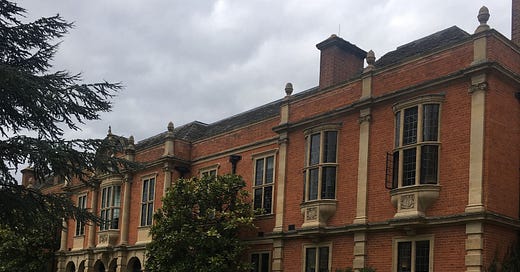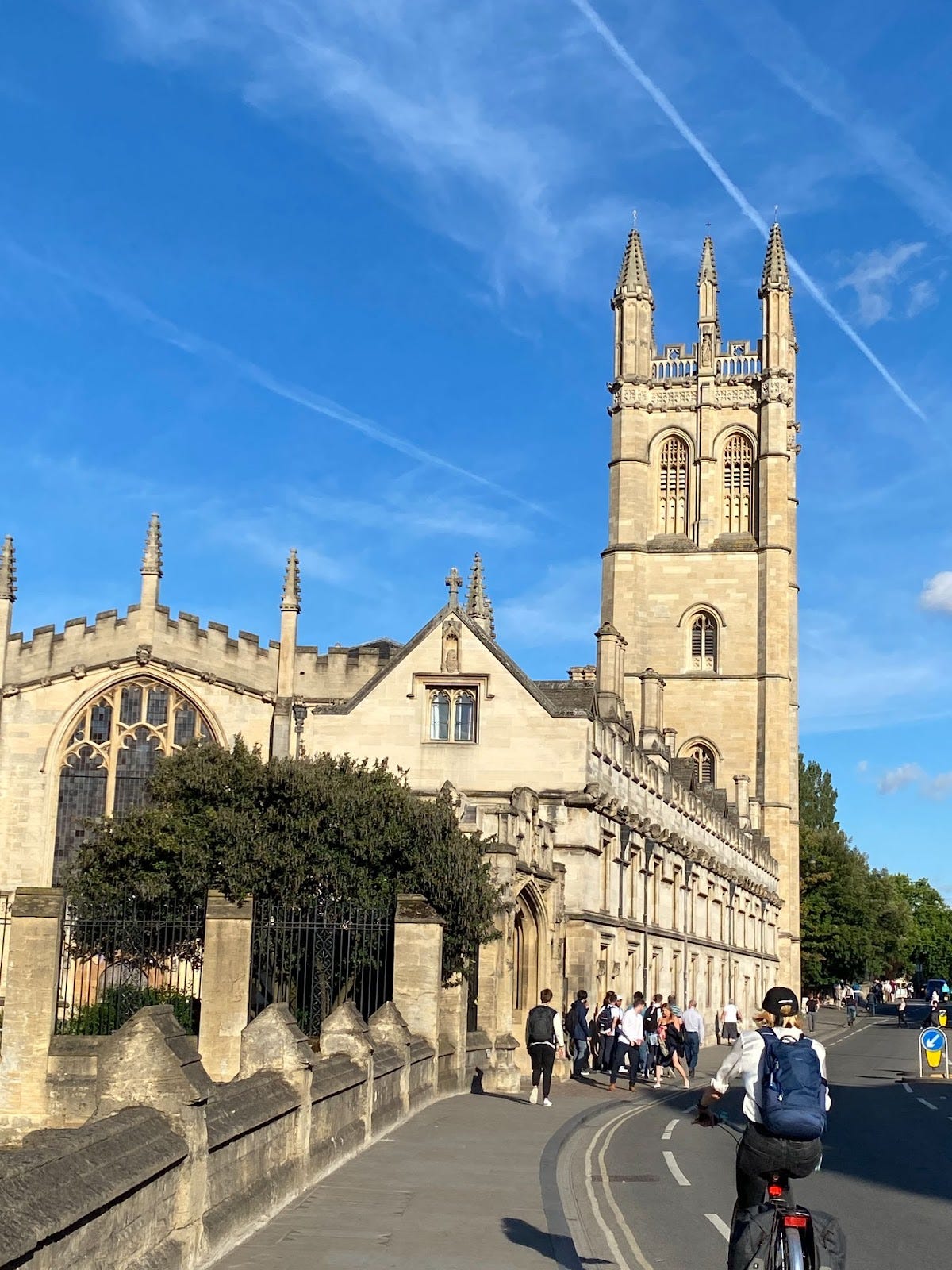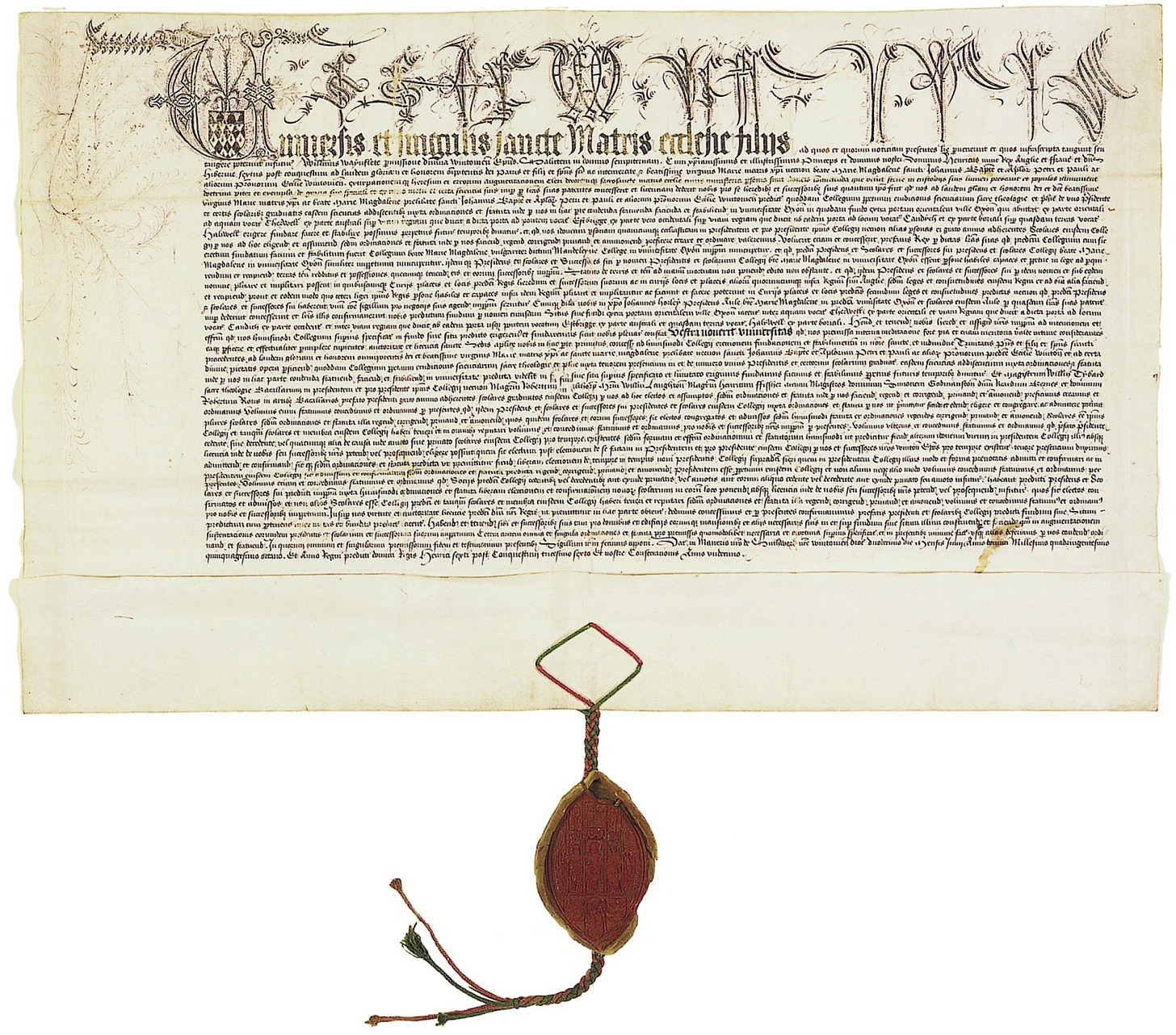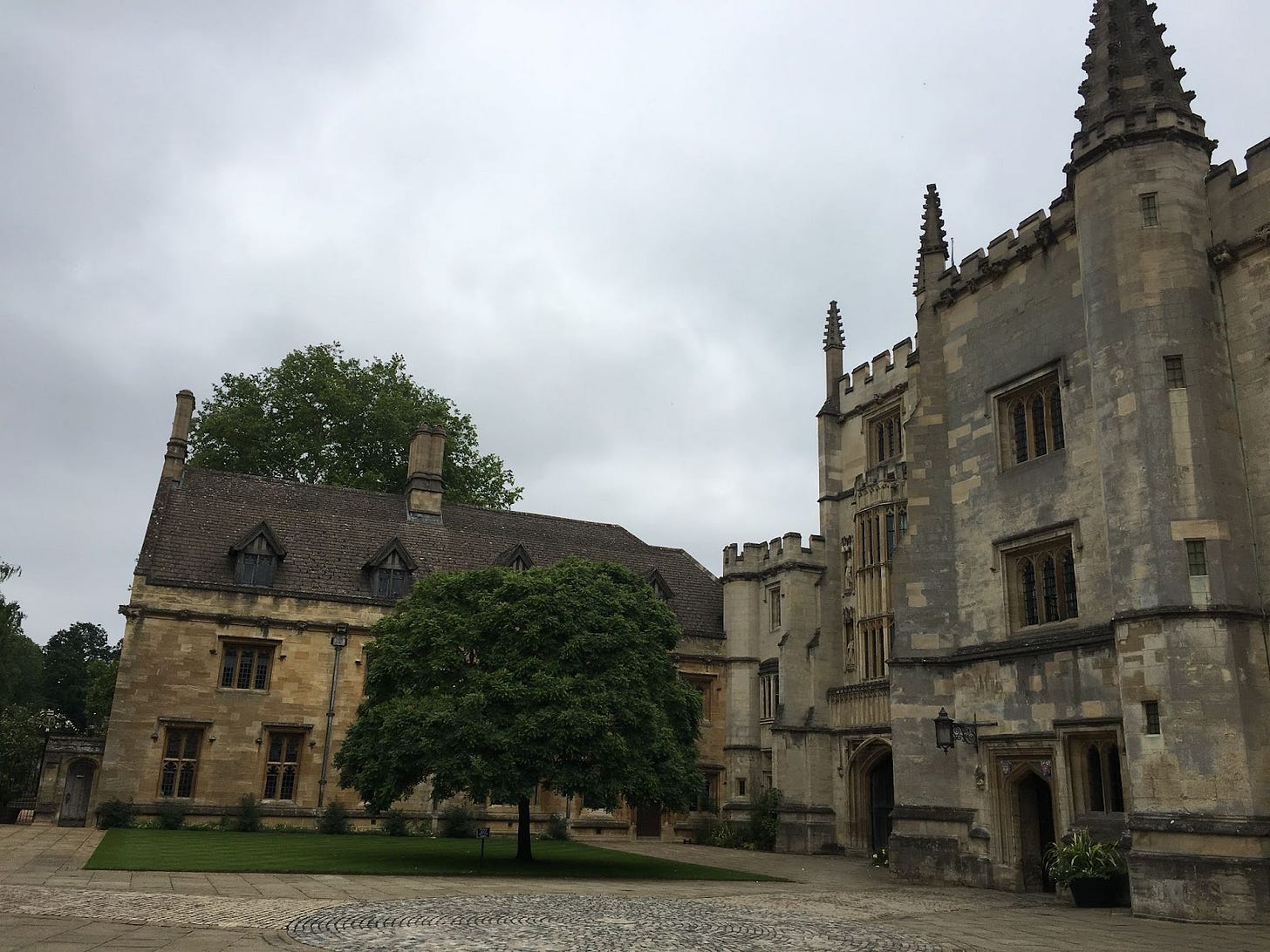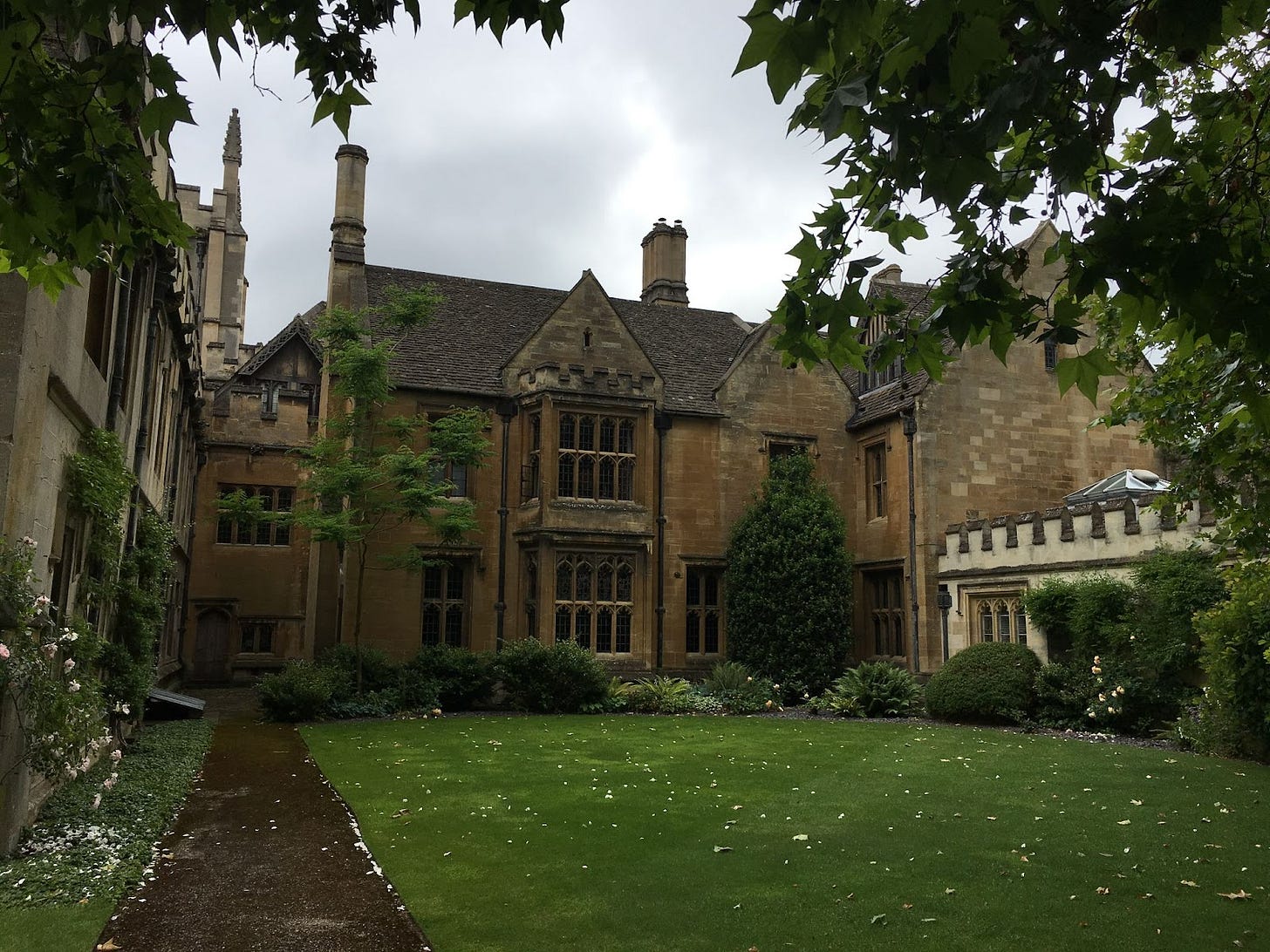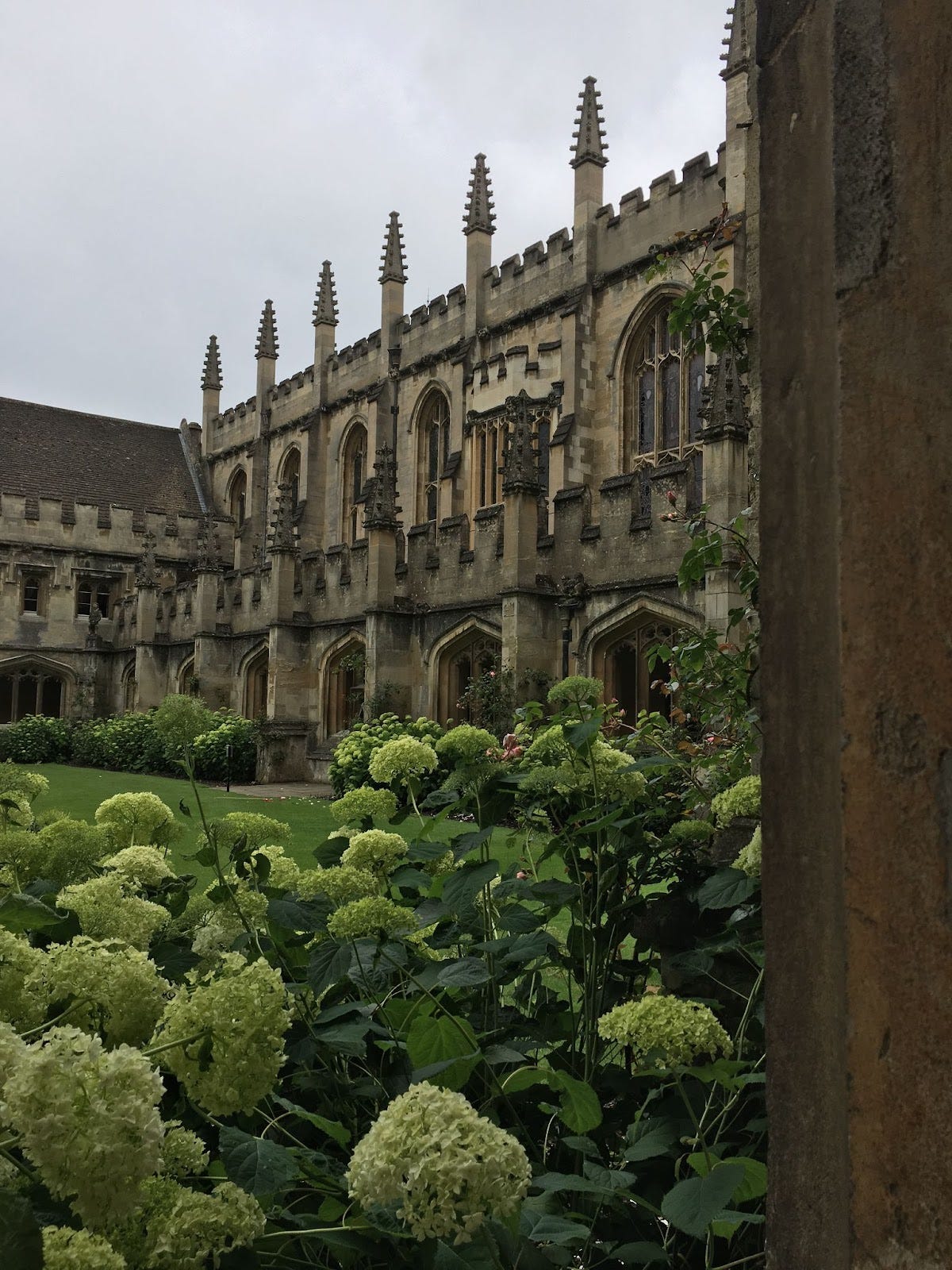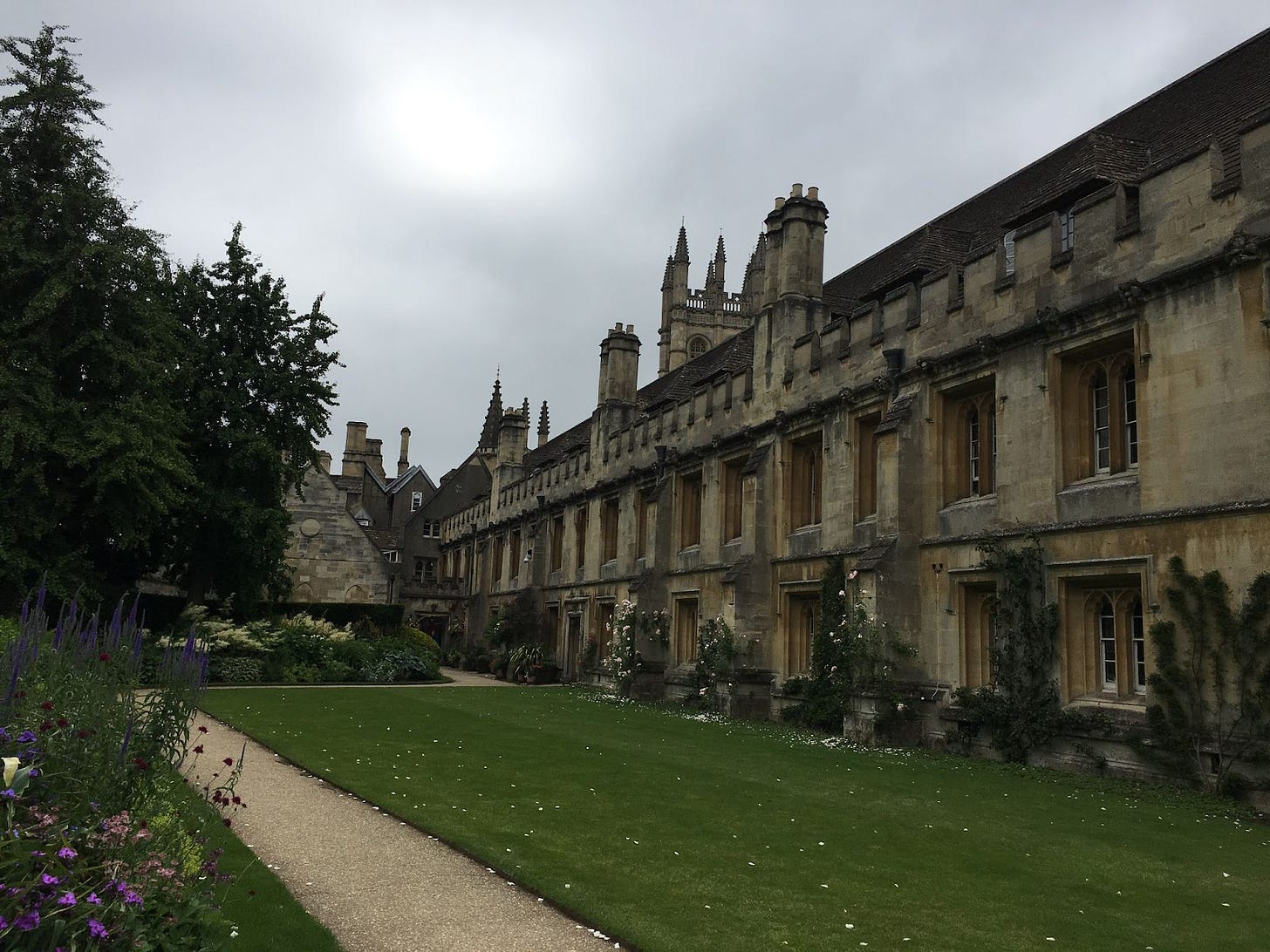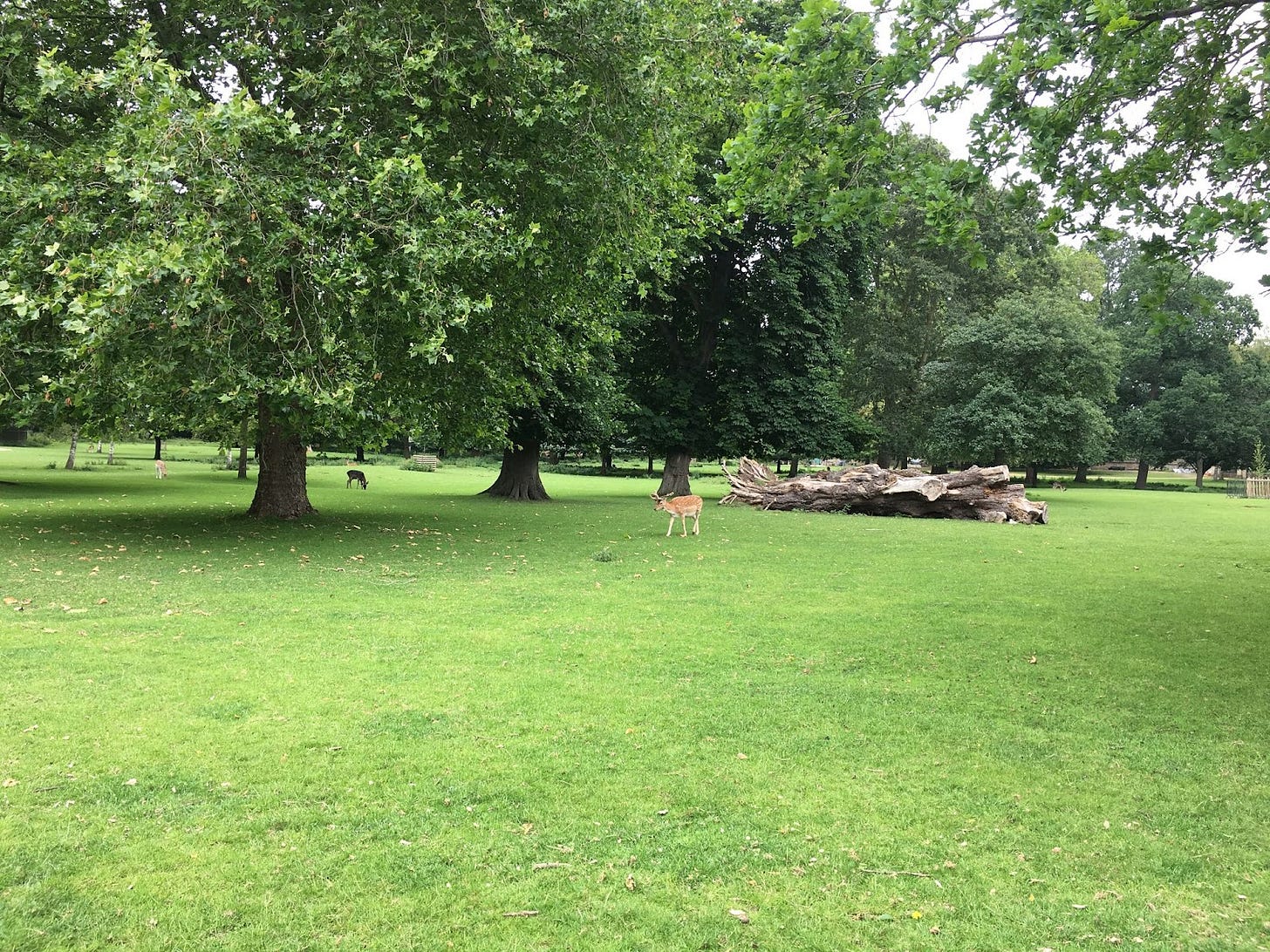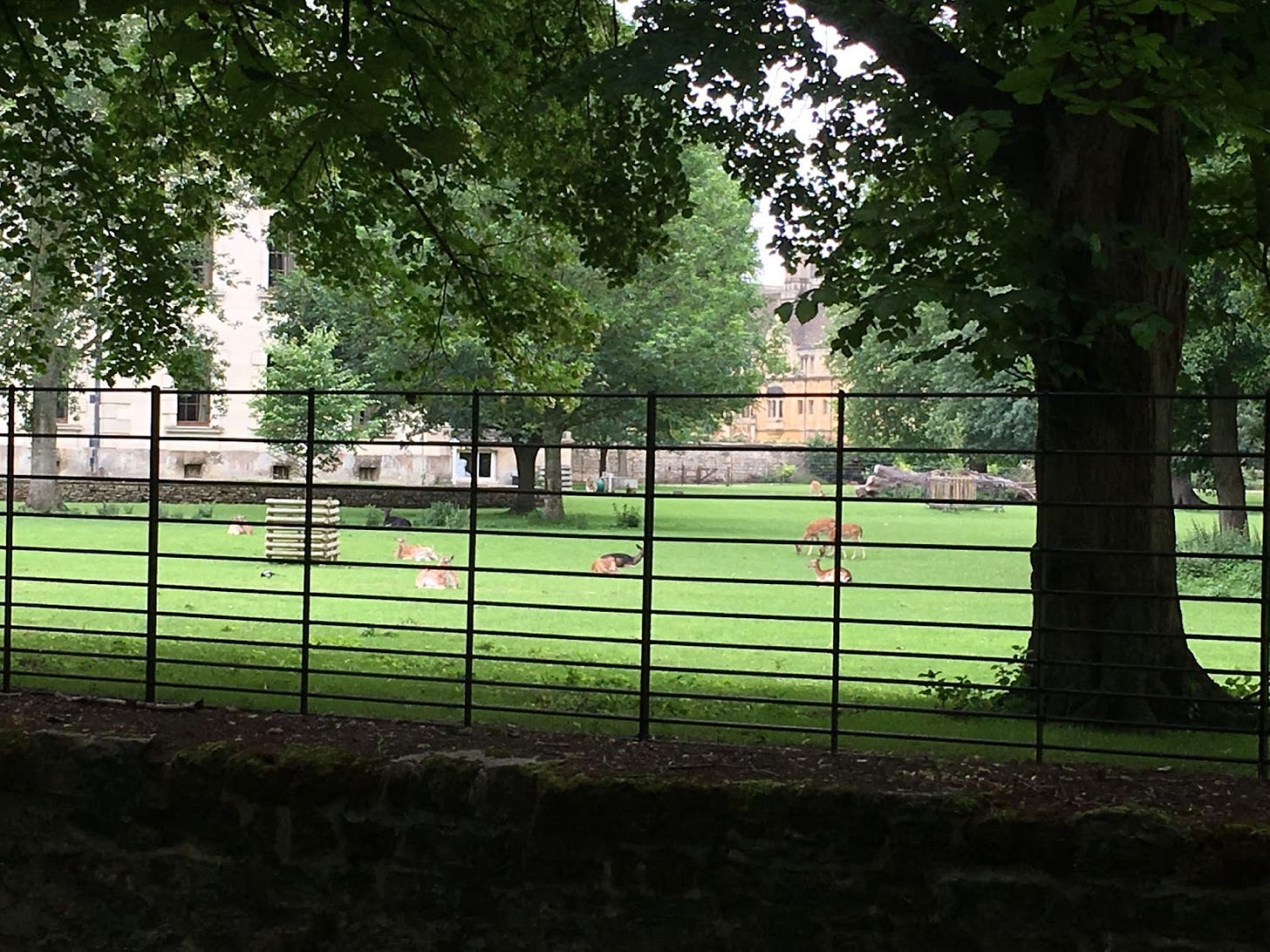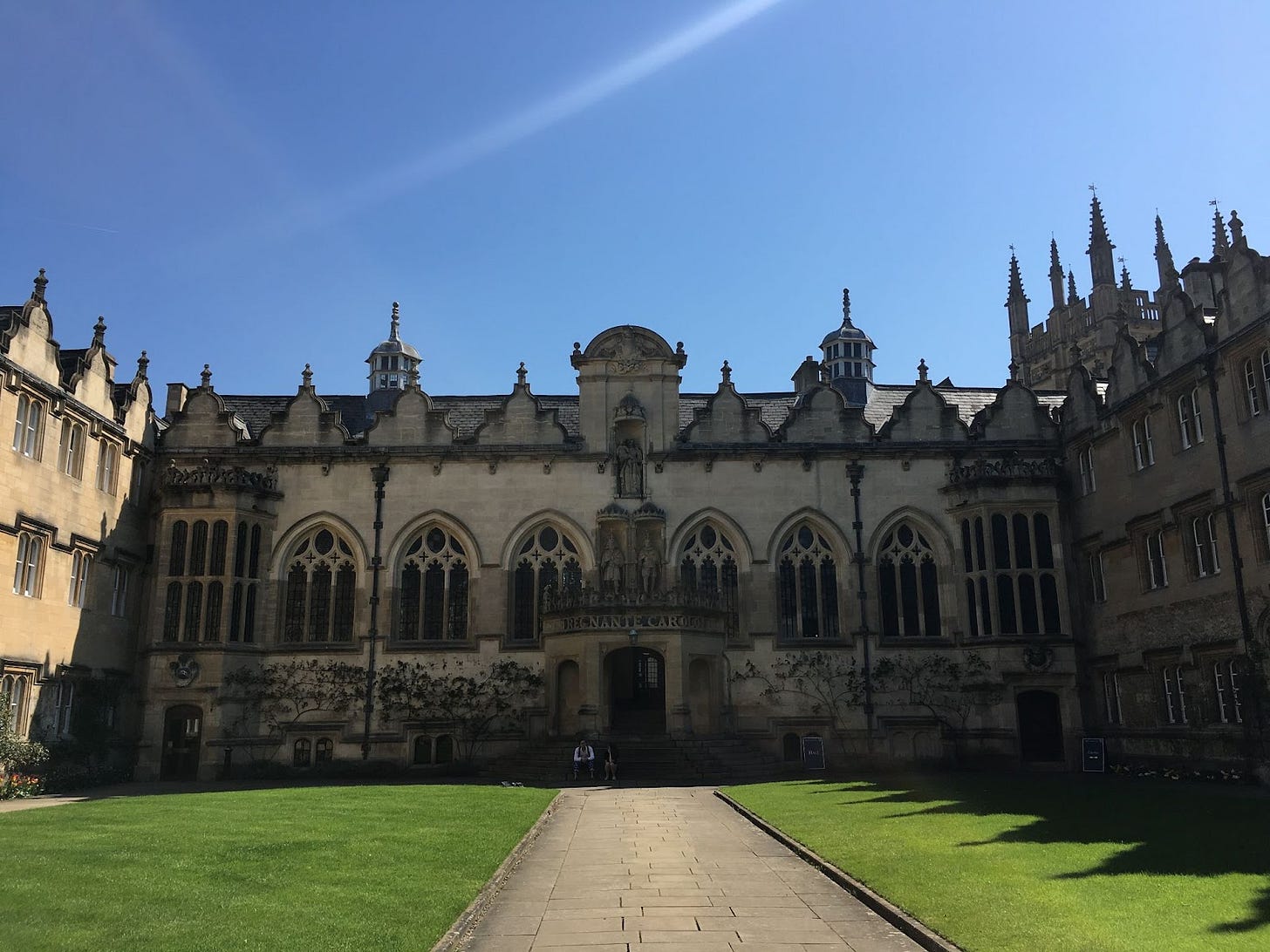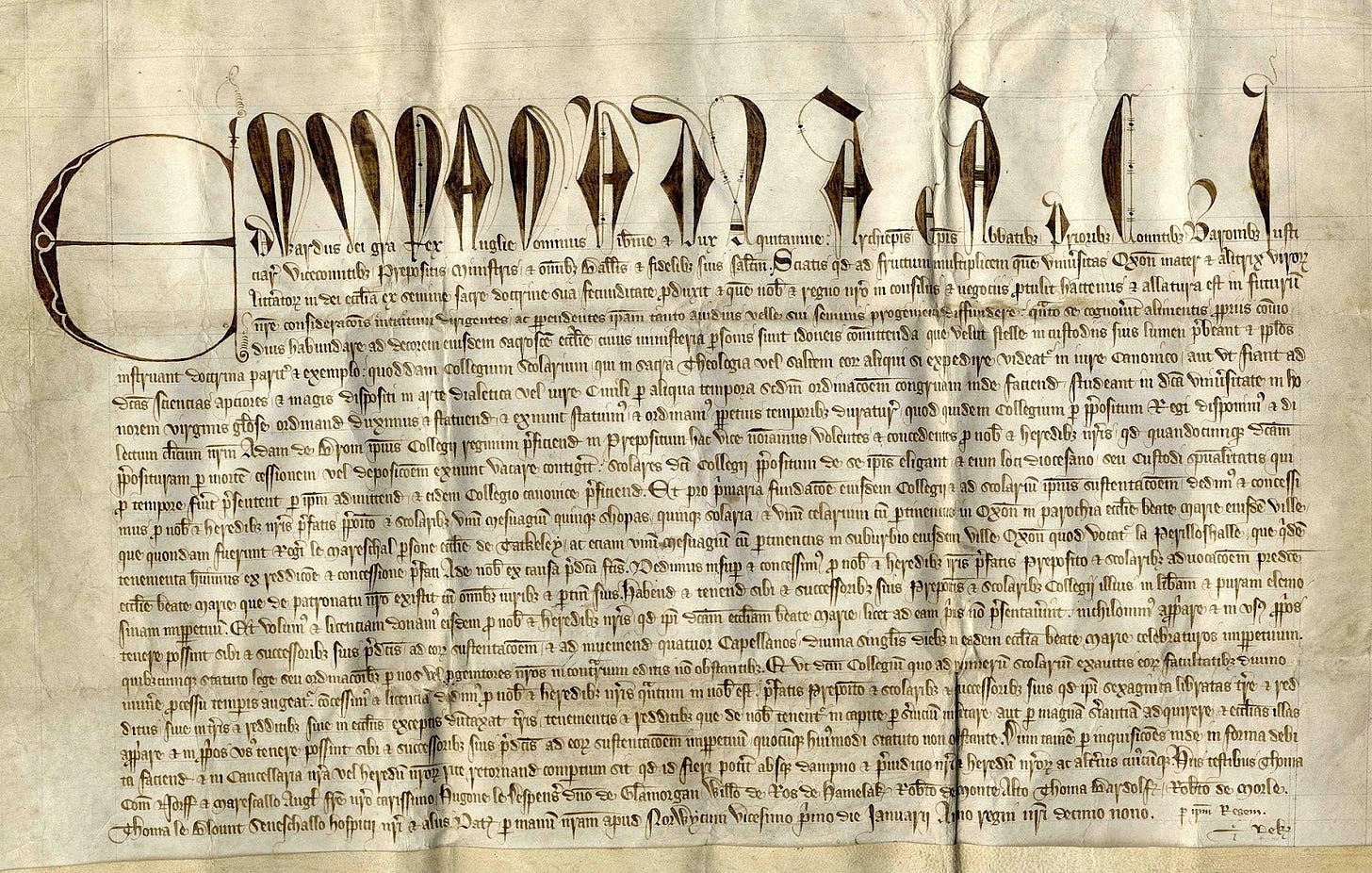Welcome
This week we dive into three Oxford Colleges. Magdalen College, which has its own herd of majestic animals, Oriel, my own college when I was at Oxford and Somerville, which counts the first female British PM amongst its alumni and was the first Oxford college for women.
Have you subscribed to my other Substack? I’d be so happy if you did.
https://substack.com/@michellepetersonclark
Last Sunday was my birthday and my family took me to see two exhibitions in London and both were fabulous. The first was ‘Holbein at the Tudor Court’ currently on at the Queen’s Gallery at Buckingham Palace, the second one was ‘Impressionists on Paper’ at the Royal Academy of the Arts. I will be doing exclusive issues of the newsletter for paid subscribers, reviewing both of these over the coming few weeks.
But for now, let’s explore three historic Oxford colleges, each with their own unique history as we go Traveling Through History this week.
Michelle
Savvy Travel Historian
You now need to upgrade to a paid subscription to be able to read each issue of Traveling Through History in full.
Upgrade Here To Read the Full Issue
March Theme: Oxford & Cambridge Colleges
Magdalen College
Background
Home to one of Oxford's famous landmarks, the square Magdalen Tower, hosts a May Day tradition that dates back to King Henry VII.
Located on the Oxford High Street at the St Clement’s / Iffley road roundabout end, Magdalen College is one of the oldest, richest and most academically successful colleges in Oxford.
History
**Side Note**
The name of the college is not pronounced the same as we say Mary Magdalen but rather said ‘Mawd-lin’.
Magdalen takes its name from the Greek Magdala, the name of the town on the Sea of Galilee (from an Aramaic word meaning ‘tower’), from which Mary Magdalen originated. In the Middle Ages this word’s pronunciation became anglicised to “maudlin” – as reflected in the contemporary spelling maudlyn. This medieval pronunciation has been retained in the name of the College, even though the spelling has been revised to reflect the Greek origin.
[Source]
[Source]
The founder of Magdalen College in 1458 was William Waynflete who was not only the Bishop of Winchester but also the Lord Chancellor of England for King Henry VI and later went on to be Provost of Eton College. He took over the St John the Baptist Hospital, which at the time was on the outskirts of Oxford and after having converted it into a college, Magdalen Hall surrendered itself and its possessions and joined them.
During the Civil War, not only Magdalen but also Oxford were Royalist supporters and the college's position on the River Cherwell, facing the road from London, gave the king a tactical advantage in the ensuing sieges.
During the first battle of the Siege of Oxford (in 1646), Charles I watched from the Magdalen Tower (shown in the first image). The subsequent capitulation of the Royalist cause, meant that the President of the college and most of its fellows were expelled and Oliver Cromwell would visit in 1649.
After the Restoration of the Monarchy, James II (in the 1680s) tried to reintroduce Catholicism into the University of Oxford, which was very Anglicised by this time. The King wanted his own man installed as the President of Magdalen and again the ensuing arguments and debates meant that a large number of fellows were expelled.
Ultimately, this situation led to the demise of the University’s relationship with the Crown and during the Glorious Revolution in 1688, all of James I’s appointments were reversed, the fellows restored and the college now holds a special banquet each year, called the ‘Restoration Dinner’, to mark the significance of the occasion.
Magdalen’s reputation declined in the 18thC when their Georgian President held the position of 63 years and few advances were made.
But the 20thC saw Magdalen’s prominence return, helped by some famous students such as CS Lewis the writer and AJP Taylor, a famous British historian.
During WWII, Magdalen played host to the RAF maintenance headquarters.
After more than 500 years, Women were finally admitted to the college in 1979.
The medieval cloisters are the heart of the college (shown above). Built between 1474 and 1480 they were designed by the renowned English architect William Orchard. He is responsible for a number of Gothic works around Oxford, including Magdalen's Great Tower.
The Grove
Occupying most of the north-west corner of the college ‘The Grove’ or deer park is home to a herd of fallow deer during winter and spring. There are currently 60 deer in the herd and the college has had deer here since the 1700s.
This map shows all areas of Magdalen College and gives a good indication of the size of the college.
[Source]
Famous Alumni
The college has had a number of notable alumni besides the two already mentioned.
To name but a few:
King Edward VIII
TW Lawrence (of Arabia)
Cardinal Thomas Wolsey (Henry VIII Chief Minister)
Cardinal Reginald Pole
Oscar Wilde
Dr Erwin Schrödinger (and his cat!)
Rt. Hon William Hague (former Leader of the Conservative Party)
The college has 10 Noble prize winners amongst its alumni from medicine to physics, literature, chemistry and economics.
To find out more information about Magdalen College, including visiting if you are in Oxford, see the college website link below.
Oriel College
Background
Oriel College is the oldest royal foundation in Oxford who therefore, has King Chalres III as its official ‘visitor’ and of the four medieval halls in the college, one is the oldest standing medieval hall in Oxford.
Located on Oriel Square at the back of Christ Church, Oriel can be accessed from the High Street of Oxford via King Edward St and Oriel St (which is generally a pedestrian lane).
History
In 1324, King Edward II granted a license to Adam de Brome to create a college in the name of the virgin Mary and he gave it an endowment of £30 per year.
The full name of the college is a mouthful!
The Provost and Scholars of the House of the Blessed Mary the Virgin in Oxford, commonly called Oriel College, of the Foundation of Edward the Second of famous memory, sometime King of England
The foundation charter was confirmed in January 1326.

